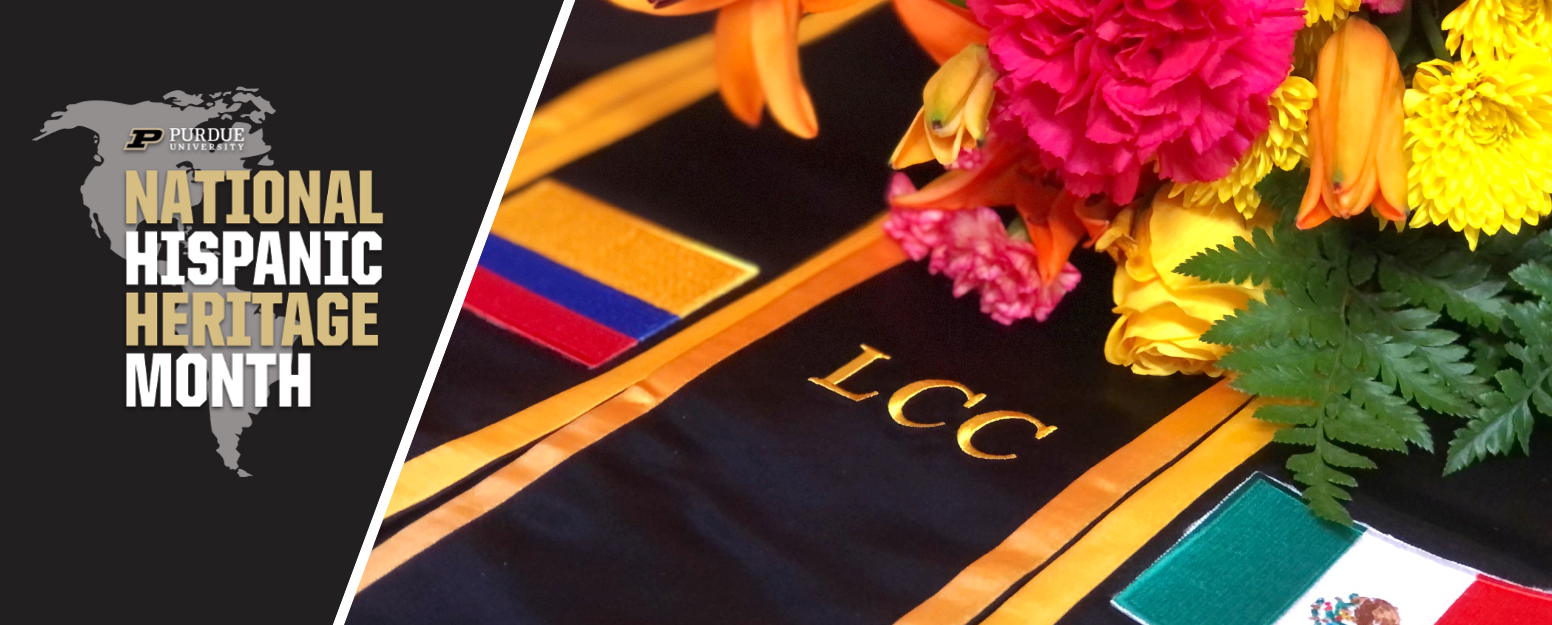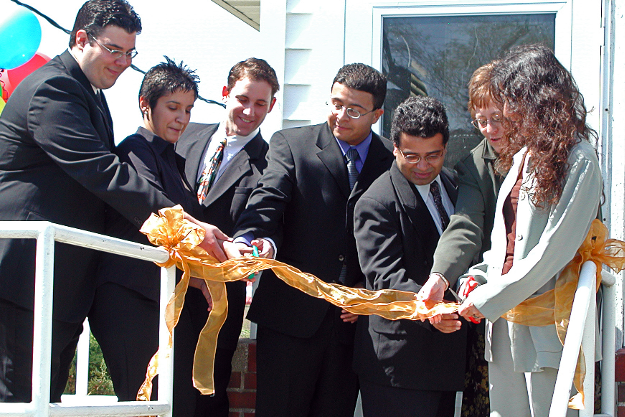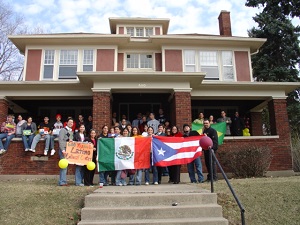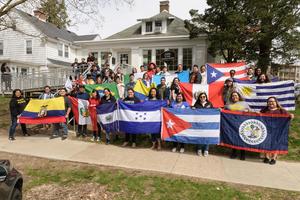
Latino Cultural Center: 20-year-old dream now a vibrant reality
This is the first in a series of articles to highlight National Hispanic Heritage Month, which begins Sept. 15, to honor the cultures and contributions of both Hispanic and Latino Americans.
 It all began with a handful of Latinx college students inspired by National Hispanic Heritage Month. After organizing events to celebrate the month at Purdue in fall 2001, the students were inspired to form the first Latino Student Union on the West Lafayette campus. Now organized, what would be their vision?
It all began with a handful of Latinx college students inspired by National Hispanic Heritage Month. After organizing events to celebrate the month at Purdue in fall 2001, the students were inspired to form the first Latino Student Union on the West Lafayette campus. Now organized, what would be their vision?
They wanted a place where all the Latinx student organizations could meet in the same building. That snowballed quickly to a dream for a cultural center that could be a home-away-from-home, where students with similar backgrounds could connect.
In those pivotal years, three of those on the board of what is now referred to as the Latinx Student Union (LSU) were:
- Agustin “Auggie” Torres Jr., from Milpitas, Calif., the first in his family to go to college. His dad immigrated from Michoacán, Mexico. As a senior in management, he was elected as the first president of LSU in fall 2001.
- Hansel Monroy, of South Milwaukee, Wisconsin, who was born in El Salvador and moved to the United States as a child. A graduate student, he already held a Purdue degree in electrical engineering and was working toward an MBA. Monroy took the baton as LSU president in fall 2002.
- Yasmin Garcia, an East Chicago, Indiana, native who had earned a full scholarship to any university in Indiana. Her mom, originally from Michoacán, Mexico, wanted her to stay close to home, perhaps attend a regional campus, but her uncle, a Boilermaker, said it was time for Garcia to go and grow. She entered Purdue in fall 2001 to study hospitality management.
Purdue steps up
As president of LSU, Torres had access to Purdue leadership. He leveraged that to present LSU’s vision to Provost Sally Frost Mason. Could they have space where all the Latinx student groups could be together? Within months, in what seemed like nano speed in university time, Mason found them five rooms in a single-story narrow building in a complex that was called South Campus Court. Torres graduated that spring 2002, and LSU president Monroy received the keys the following fall.
They had a space and $3,000 from the provost for furniture and supplies. Staff volunteers also stepped up. Joel Zarate, former director of waste management, helped the students find used furniture and set up the office. Their advisor was Antonia Munguia, now director of recruiting, retention and diversity for the Polytechnic Institute.
About 20 student volunteers ran the office, unlocking the doors at 7 a.m. each day, passing out flyers and organizing events in the parking lot.
“We demonstrated proof of concept, that students really wanted this,” Garcia said. The students called the facility a “center” from the start, but the university didn’t make it official until April 11, 2003. Nine months later, in January 2004, Purdue announced it had hired the center’s first director, Maricela Alvarado.
How things have changed
The center got underway none too soon. When it opened, there were 897 Latino students (undergraduate, graduate and professional) at Purdue’s West Lafayette campus. This fall, the number topped 2,932, having more than doubled in the past 10 years. Now operating from a house at 426 Waldron St., the center has a staff of nine including three full-time employees, two graduate assistants and four undergraduate student employees, and is led by Carina Olaru, who in 2019 was named educator of the year by the Indiana Latino Expo. She is also a connector, engaging with the students in the local and state Latinx community. While continuing as LCC director, Olaru was promoted to director of student advocacy and education, a role that focuses on undocumented and DACA students at Purdue and its regional campuses. Both roles are in the Division of Diversity and Inclusion.
 The center still is a place for faculty as well as students and staff to connect and hold events. But it also has grown into a model of student success programming. In addition to the tutoring and academic support provided there, student affairs professionals are on site weekly providing advising, counseling and career coaching. The center celebrates its students and just secured a grant to help 20 students learn the skills, information and support systems needed to navigate higher education.
The center still is a place for faculty as well as students and staff to connect and hold events. But it also has grown into a model of student success programming. In addition to the tutoring and academic support provided there, student affairs professionals are on site weekly providing advising, counseling and career coaching. The center celebrates its students and just secured a grant to help 20 students learn the skills, information and support systems needed to navigate higher education.
But one thing hasn’t changed. The watchword to the Latino Cultural Center still is "Todos Son Bienvenidos," which means “All are Welcome.”
Alumni
The original founders are still in touch, networking for and with the other Purdue Latinx alumni. They are proud of their Purdue roots, continue to give back to the Latino community and are grateful to see what has become of their efforts.
- Torres is back in the California Bay Area, where he’s a public policy manager at Facebook. He was the keynote speaker for the center’s commencement celebration in 2018.
- Hansel, lives in San Jose, California, a 20-minute drive from Torres, and is a delivery executive at Google, working with its top corporate customers. There he’s involved with Hispanic Organization for Leadership and Advancement (HOLA) and is on the board of the Salvation Army Silicon Valley.
- Garcia, who married another Purdue graduate, worked for Hyatt Hotels until her son, Noah, was born. Now she works from home as a program manager for Workforce Logiq, an employer of record for professionals needed in a variety of industries. She oversees 33 payroll accounts.
Is she grooming Noah for Purdue? She says: “We taught him to cheer ‘Boiler Up!’”
To support the Latino Cultural Center’s mission, visit this link to learn more about giving opportunities.
- Archived Stories
- A servant Boilermaker who lives on in others
- Latino Cultural Center: 20-year-old dream now a vibrant reality
- Purdue Latinx students gain strength from looking inward and connecting outward
- Latin American minor covers breadth of history and cultures
- Former student plants seeds for growth, sustainability
- From Nicaragua to Purdue, the roots that became wings